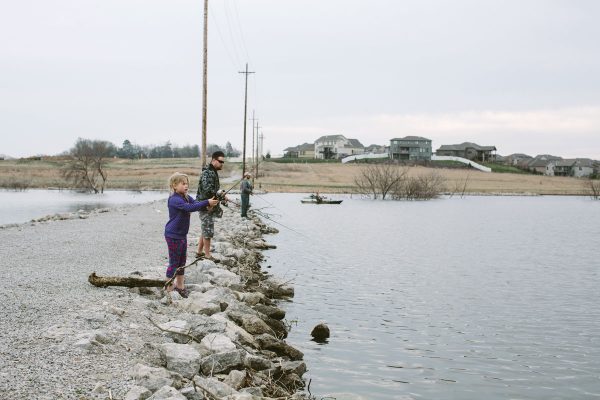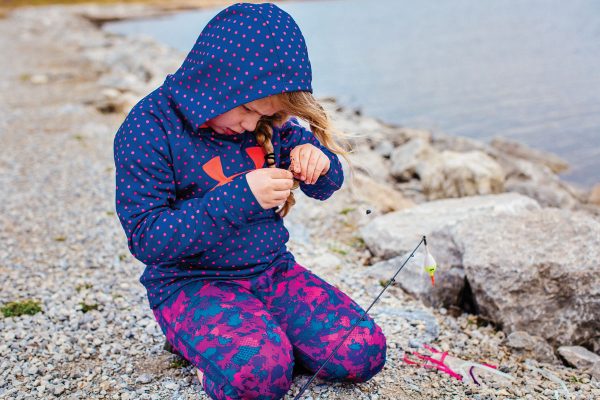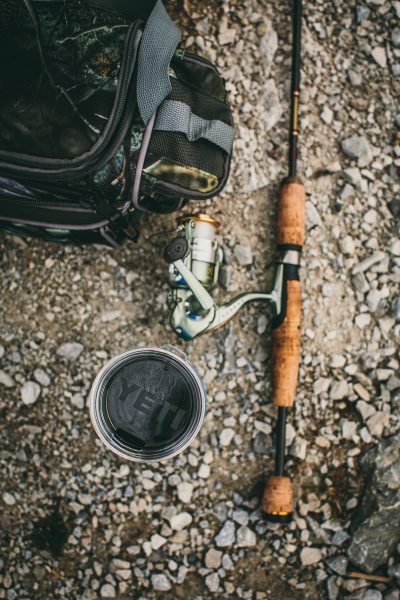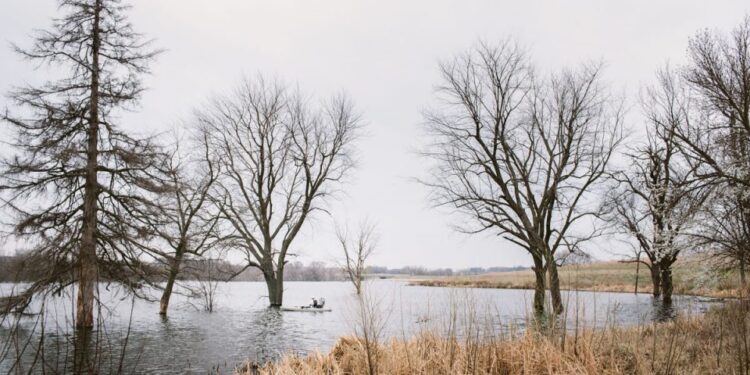Eating wild-caught fish from rivers, streams, and dam sites is almost as fun as catching them. But consuming too much of certain fish species is not advised. Mercury, polychlorinated biphenyls, and other pollutants can bioaccumulate inside some fish swimming in local waterways.
That doesn’t mean folks shouldn’t eat wild-caught fish—it just means that consumers should know what, how much, and how often they’re eating fish with potential trace amounts of contaminants.
A list of contaminated waters is maintained on the Nebraska Department of Environmental Quality’s website. The department warns against long-term consumption of more than “eight ounces per week” of designated species of fish.
Mercury is a natural element in the environment, but it is often released into the air through industrial pollution. Mercury that finds its way into local bodies of water can be transformed into methylmercury, which can then be absorbed by the aquatic life living there.
Mercury exposure affects nervous system and brain development. Developing fetuses and small children are the most affected, so parents and pregnant women should be cautious of mercury. Polychlorinated biphenyls (PCBs), on the other hand, are carcinogenic.

Testing for Pollutants
Greg Michl says the benefits of eating wild-caught fish outweigh the cons of mercury contamination, so long as one exercises proper precautions.
Michl has worked for the Nebraska Department of Environmental Quality for almost 27 years. As coordinator of the Nebraska Fish Tissue Program, he conducts investigations into surface water quality issues.
Methylmercury and PCB contamination in fish tissues are his primary concern. Michl says it’s easier to analyze bioconcentrations of these contaminants in fish tissues than it is to analyze in the water itself.
“We use fish as a surrogate,” says Michl, who is responsible for collecting tissue samples.
He uses electrofishing equipment to stun the fish before taking tissue samples—small biopsy plugs from near the dorsal spine—before returning the fish safely to the water. An Environmental Protection Agency lab then tests the samples, Michl assesses the data, and he reports his findings.
Methylmercury and PCB contamination appear to be under control in Nebraska. PCBs were first produced and marketed in the United States beginning in 1929.
PCBs gained widespread use as coolants and lubricants because of their remarkable insulating capacities and flame-retardant nature. Unfortunately, PCBs are extremely persistent in the environment and “bioconcentrate” within the food chain. As with methylymercury, fish absorb PCBs as they feed in contaminated waterbodies.
Fortunately, Michl reports that PCB concentrations in fish tissue are on the decline and only a few locations are still under advisory. EPA regulations banned the manufacture and use of PCBs in the late 1970s. Michl expects to see many PCB contamination sites fall off the radar in time.
As for mercury, “The U.S. has a pretty good system in place for regulating what goes into the air,” Michl says, “but eradicating contamination would have to be a worldwide effort. The U.S. can’t do it alone.”
Michl says methylmercury has been detected almost everywhere across the state of Nebraska “primarily in reservoirs and lakes,” and “we see it in some riverine systems’ fish.”

Beware of Predatory Fish
Sue Dempsey says there is “no solution at this time” to methylmercury contamination in local waters. For 25 years she has been a risk assessor and toxicologist for the Nebraska Department of Health and Human Services in the Public Health division.
Her job, in part, is to help protect Nebraska citizens from contaminants in fisheries. “We monitor the fish and issue guidelines for fish consumption and ingestion,” she says. “We advise people on which species to choose.”
On methylmercury, she says bioaccumulation is a concern: “Big fish eat little fish, and it goes up the food chain.” She also warns that regional contaminants, such as pesticides, are a pollution concern for fisheries.
Nevertheless, she fishes, eats fish, and recommends others do the same while taking proper precautions. Dempsey’s advice on selecting and portioning fish to avoid contamination can be found in her “Eat Safe Fish in Nebraska” brochure, which she encourages the public to read.
Regarding wild-caught Nebraska fish, Dempsey says, “I’m big on moderation.” Her brochure advises that bluegill, crappie, perch, and rainbow trout have the lowest concentrations of methylmercury contamination. Catfish are acceptable, walleye and pike should be limited, and bass are not recommended.
 Michl advises anglers to watch out for predator catfish such as the flathead, as they have higher concentrations of methylmercury than do channel catfish, which scavenge for food. But that does not mean avoid them entirely.
Michl advises anglers to watch out for predator catfish such as the flathead, as they have higher concentrations of methylmercury than do channel catfish, which scavenge for food. But that does not mean avoid them entirely.
Dempsey says PCBs store in fat tissue of fish. “PCBs can be removed easily by removing portions and by baking,” she says. Baking allows the fat to drip away from the fish. Mercury appears throughout the entire fish.
So, the next time you’ve got a big Missouri River flathead on the line, and you have to decide whether to catch or release, consider the risk of contaminants when making your choice. I always advise catch-and-release of big catfish anyway.
Fish Species and Pollutants of Concern in Local Waters
A 2015 report from the Nebraska Department of Environmental Quality warns of pollutants in 142 bodies of water across the state. Ten of the waterbodies are located in Douglas and Sarpy counties. The department’s list does not “ban eating fish” from the contaminated waters. Instead, the advisory urges consumers to limit long-term intake of specified fish species from the identified waterbodies “to eight ounces per week (for adults).”
Location—species—pollutant
Douglas County
- r
- Carter Lake—Largemouth Bass—PCBs
- Prairie View Lake—Largemouth Bass—Mercury
- Standing Bear Lake—Largemouth Bass—Mercury
- Two Rivers Lake No. 1—Largemouth Bass—Mercury
- Zorinsky Lake—Largemouth Bass—Mercury
r
r
r
r
r
r
Sarpy County
- r
- Halleck Park Lake—Largemouth Bass—Mercury, Selenium
- Offutt Lake—Channel Cat—PCBs
- Walnut Creek Lake—Largemouth Bass—Mercury
- Wehrspann Lake—Largemouth Bass—Mercury
- West Papillion Creek—Carp—PCBs, Mercury
r
r
r
r
r
r
For more information, the Nebraska Department of Health and Human Services, Public Health produced the brochures “Eat Safe Fish in Nebraska” (dhhs.ne.gov/publichealth/documents/fishbrochureenglish.pdf) and “Environmental Risk Assessment Fish Consumption Advisories 2016” (dhhs.ne.gov/publichealth/pages/puh_enh_environmentalriskassessment_fishtissue.aspx), while the Nebraska Department of Environmental Quality has published 2015 results of its Regional Ambient Fish Tissue Program (deq.ne.gov/publica.nsf/pages/wat239).
This article printed in the May/June 2017 edition of Omaha Home.













